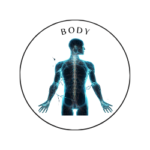 Mind
Mind
- Digital and Modern Well-being
- Mental Health and Emotional Well-being
- Mind-Body Connection and Holistic Health
- Parenting and Family
- Personal Growth and Development
- Relationships and Social Well-being
- Stress and Relaxation
- Therapeutic and Creative Practices
- Trauma and Recovery
- Work, Productivity, and Discipline
 Body
Body
 Fitness
Fitness
 Food
Food
 Beauty
Beauty
Recovery and Rest

Recovery and Rest After Exercise: The Key to Optimal Fitness
Whether you’re an avid athlete or a casual gym-goer, recovery and rest after exercise are crucial for your long-term health and fitness performance. While exercise breaks down muscle tissue and depletes your energy reserves, the recovery process is when your body heals, rebuilds, and becomes stronger.
This article will explore why recovery is so important, the different types of recovery, and practical tips to help you optimise your post-exercise routine.
Why Recovery and Rest Matter
The human body is resilient, but it needs time to repair and adapt after the stress of physical activity. Here’s why recovery is essential:
Muscle Repair and Growth: During exercise, especially resistance training, muscle fibres experience tiny tears. Rest and recovery are necessary to repair these tears, leading to muscle growth and improved strength over time.
Reduced Risk of Injury: Overworking your muscles without adequate recovery can lead to overuse injuries, such as tendonitis, stress fractures, or muscle strains. Proper rest allows your body to recover and reduces the risk of injury.
Mental and Emotional Reset: Physical activity can also take a toll on your mental state. Incorporating rest helps combat fatigue, stress, and burnout, keeping you motivated and focused on your fitness goals.
Improved Performance: Consistent recovery leads to better performance. Rest allows you to train harder, faster, and stronger by replenishing your energy reserves and restoring your muscles to peak condition.
Types of Recovery
Recovery can take many forms, and understanding the differences will help you tailor your post-exercise routine to your needs:
1. Active Recovery
Active recovery involves light physical activity following a workout, such as walking, cycling, or swimming at a low intensity. This type of recovery promotes blood flow to muscles, helps flush out lactic acid, and reduces soreness without placing additional stress on your body.
Examples of active recovery:
- Walking or light jogging after a run
- Yoga or stretching after a weightlifting session
- Low-intensity swimming or cycling on a rest day
2. Passive Recovery
Passive recovery, or complete rest, involves no physical activity and allows your body to fully recuperate. This is especially important after intense workouts or when you’re feeling fatigued or sore. Passive recovery ensures your muscles, joints, and nervous system get the rest they need.
Examples of passive recovery:
- Taking a day off from all physical activity
- Enjoying a relaxing bath or engaging in meditation
- Getting adequate sleep, ideally aiming for 7-9 hours per night
3. Nutrition Recovery
Your body needs the right nutrients to recover effectively. Consuming a balanced meal or snack that includes protein, carbohydrates, and healthy fats post-exercise helps replenish energy stores and supports muscle repair.
Examples of nutrition recovery:
- A protein shake or smoothie blended with fruits and vegetables
- Whole grain toast topped with avocado and poached eggs
- Greek yogurt with mixed berries and a sprinkle of nuts
Practical Tips for Optimising Recovery
To make the most of your recovery time, consider these practical strategies:
1. Hydration is Key
Proper hydration is essential for recovery. Water helps transport nutrients throughout your body and plays a vital role in muscle function. Drink water before, during, and after your workouts to stay adequately hydrated. Consider electrolyte-rich drinks after intense sessions, especially in hot weather.
2. Incorporate Stretching and Foam Rolling
Gentle stretching and foam rolling can alleviate muscle tension, enhance flexibility, and promote circulation. Focus on major muscle groups used during your workout. A few minutes of stretching post-exercise can significantly improve your recovery.
3. Prioritise Sleep
Quality sleep is one of the most critical factors for recovery. During deep sleep, your body works hard to repair tissues, synthesize proteins, and release growth hormones. Create a relaxing bedtime routine, maintain a consistent sleep schedule, and ensure your sleep environment is conducive to rest.
4. Listen to Your Body
Pay attention to how your body feels after exercise. Signs of overtraining or inadequate recovery may include persistent soreness, fatigue, irritability, or decreased performance. If you experience any of these symptoms, consider adjusting your workout intensity or incorporating additional rest days.
5. Plan Recovery Days
Incorporate planned recovery days into your training regimen. Schedule lighter workout days, focus on active recovery, or allow yourself to rest completely. This practice ensures you don’t push your limits too often, allowing your body to recuperate fully.
Conclusion
Recovery and rest after exercise are integral to a successful fitness journey. By prioritising both active and passive recovery strategies, maintaining proper hydration and nutrition, and getting enough sleep, you can enhance your physical performance and overall well-being. Remember, the journey to fitness is not just about how hard you train but also how well you allow your body to recover. Embrace rest as part of your fitness routine, and you’ll reap the rewards in the long run.
